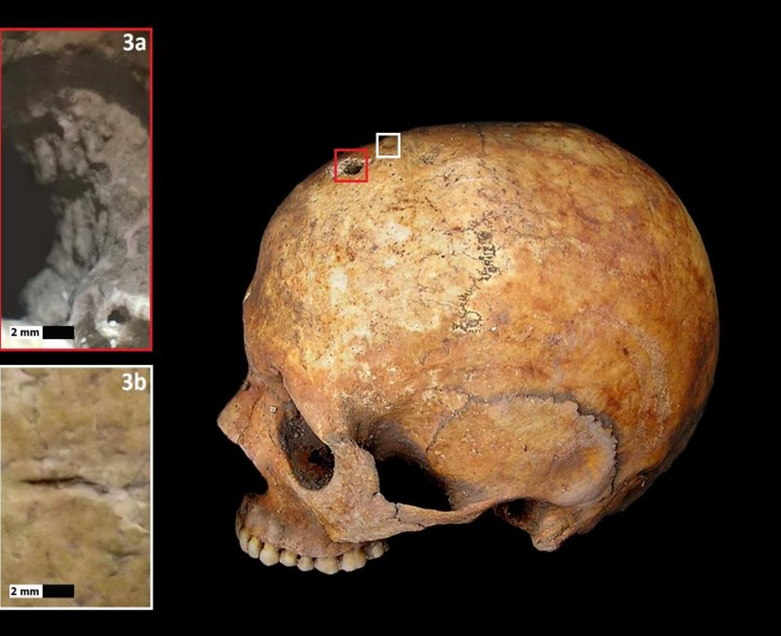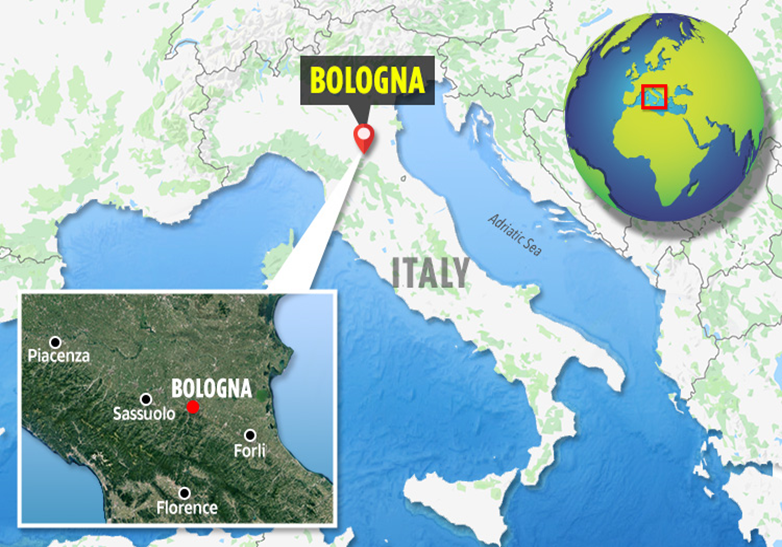Over 1,000 years ago, this woman gave birth in her grave

An ancient medieval tomb found near Bologna, Italy, contained a pregnant woman with a head injury with a fetus between her legs. Thanks to the positioning of the bones, the researchers concluded that it was a "coffin birth", when a baby is forcibly removed from its mother's body after she dies.
The tomb, dating from the 7th-8th century AD, was found in 2010 in Imola, northern Italy. It was because the adult skeleton was found face up and intact that archaeologists determined it to be a burial. The fetus between her legs and the head injury, however, demanded a thorough investigation, recently published in the journal World Neurosurgery by researchers from the universities of Ferrara and Bologna.

Based on the length of the femur bone, the researchers first determined that the fetus was around 38 weeks gestation. The baby's head and upper body were below the pelvic cavity, while the leg bones were still inside. This means that he was beginning to prepare for the birth. Although rare in contemporary forensic literature – and even more so in the bioarchaeological record – this could be a case of post-mortem fetal expulsion, or coffin birth. Bioarchaeologist Siân Halcrow, from the University of Otago (New Zealand), explains that in the case of the death of a pregnant woman, the gas produced during the normal decomposition of the body sometimes accumulates to the point that the fetus is forcibly expelled.

This birth example is interesting from an archaeological point of view, but the mother's medical condition makes it quite unique: she had a small mark on her forehead and a 5mm circular hole right next to it. These could be, according to the researchers, the signs of trepanation, an ancient form of skull surgery. Not only was the pregnant woman trepanned, but she also lived for at least a week after the primary surgery. In the article, the Italian researchers propose a correlation between the mother's surgery and her pregnancy: eclampsia.“Because trepanation was once used in the treatment of hypertension to reduce blood pressure in the skull, they write, we hypothesized that this lesion might be associated with the treatment of a hypertensive pregnancy disorder” .
Eclampsia is the onset of seizures in a pregnant woman with pregnancy-related high blood pressure. And especially a few centuries ago, this condition was probably a frequent cause of maternal death. A pregnant woman who suffered from fevers, convulsions and headaches in the early Middle Ages could very well have been trepanned. “Given the characteristics of the wound and the late pregnancy, our hypothesis is that the pregnant woman suffered eclampsia, and was then treated with frontal trepanation to relieve intracranial pressure,” the researchers note .

If the researchers' conclusions are correct, the mother's condition unfortunately did not improve, and she was buried still pregnant in a grave lined with stones. Her body decomposing, her deceased fetus was then partially expelled.
Source: websites

